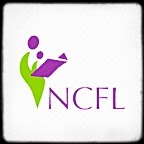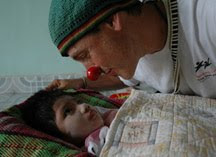According to Havas PR North America, the rise of the conscientious consumer isn't around the corner. It's happening right now. More people favor responsible brands all over the world.
Globally, 34 percent of consumers say that they always or often purchase one brand over another for reasons of conscience. Sixty-seven percent said they would like to do so in the future.
The United States lags slightly behind with 23 percent of American consumers saying they always or often buy one brand over another because it's more responsible. Fifty-four percent said they would like to be more conscientious and buy from brands that support well-being and sustainability.
"In part, this phenomenon is about people everywhere questioning the assumptions of the financial crisis that started in 2007," said Marian Salzman, CEO of Havas PR North America. "And in part it's about using 21st-century tools to get more information in order to be consumers who are proactive about ethical, responsible, sustainable brands. Plus, the transparency trend and many others are converging to bring us to a heightened mindfulness in both consumption habits and social and environmental impact."
This thinking is based upon BeCause It Matters, a white paper that analyzes the thoughts and habits of 23,510 consumers from 14 countries related to issues of conscience. According to Havas PR, the trend in being more conscientious is growing, especially among women and in efforts that require little or no additional effort from them. In short, they want companies to do the real work.
The concepts behind the conscientious consumer.
The idea of a more conscientious consumer isn't new. It's largely based on the evolution of ethical consumerism whereby people favor ethical products through "positive buying" and avoid companies that don't meet minimum standards through "negative buying" or a moral boycott. The term was first popularized by Ethical Consumer, a magazine published in the United Kingdom in 1989.
Since then, the concept has resurfaced with several other monikers. Several years ago, for example, The Futures Company published a white paper that predicted a dramatic shift in consumer conscience and confidence that would take hold around 2010.
 It anticipated that more consumers would be responsible, vigilant, resourceful, prioritized, and network oriented. And then, a few months later, Euro RSCG Worldwide highlighted the characteristics of an emerging group of prosumers — people who value experiences over ownership, the natural world over the fabricated world, and good corporate citizens over disconnected product promoters.
It anticipated that more consumers would be responsible, vigilant, resourceful, prioritized, and network oriented. And then, a few months later, Euro RSCG Worldwide highlighted the characteristics of an emerging group of prosumers — people who value experiences over ownership, the natural world over the fabricated world, and good corporate citizens over disconnected product promoters.
Euro RSCG Worldwide and Havas PR, incidentally, are one in the same. But regardless of names and monikers, the principles are the same. There are halos associated with topics such as workers' rights, going green, global sustainability, animal welfare, and altruistic efforts. Most of us like the idea that people are somehow, slowly, becoming more conscientious than before.
Of course, that is not to say that the concept doesn't have critics. George Monbiot once wrote that progressive insertion has a tendency to transform itself into self-interest or expectant disinterest by nurturing the mindset that "we've done enough" simply by voting with dollars. Some critical studies support his hypothesis, but most suggest implementation is problematic much earlier. Specifically, the socially conscious consumer might exist but is considerably more elusive or taking the slow road.
What companies really need to know.
There is a hard core group of conscientious consumer that exists, but it is relatively small despite a
25-year incubation period. In the United States, for example, about 6 percent of those surveyed in BeCause It Matters could be considered hard core. Beyond this 6 percent, 15 percent said they often avoid brands with poor ethics and another 32 percent avoided them sometimes.
Where the emerging conscientious consumer does better is in recommending responsible brands. More than 40 percent of American consumers actively recommend responsible brands (13 percent strongly and 28 percent somewhat). At the other end of the spectrum, about 15 percent said it would make no difference in whether or not they would recommend a brand.
What companies always need to keep in mind is that the emerging conscientious consumer tends to look more ahead than take action. Specifically, in benchmarking studies over the last two decades, what consumers say they will do versus what they actually do is different. We all want to be the conscientious consumer, but have a much harder time putting it into practice when making choices based on price, product quality, or brand loyalty.
In knowing this, companies wanting to shift toward a conscientious framework must approach the market differently. They need to bake social responsibility into the brand (rather than dilute any potential impact with green washing or marketing-centric donation promotions). They have to produce superior products (because socially conscious sentiment is not enough for most consumers to justify higher prices). And most importantly, they need to realize that conscientious companies don't really cater to the conscientious consumer as much as they are actively working to make them.
Is it worth it? It depends. To succeed, the company needs to establish clear values and a culture that supports them. Marketing efforts need to bake the conscientious contrast point into the brand rather than a campaign. The economic climate needs to be stable enough to support socio-economic mobility, which drives consumer confidence by focusing consumer attention on the future and thereby moving the mindset away from more the immediate cost savings. At least that is what seems to be. What do you think?
Globally, 34 percent of consumers say that they always or often purchase one brand over another for reasons of conscience. Sixty-seven percent said they would like to do so in the future.
The United States lags slightly behind with 23 percent of American consumers saying they always or often buy one brand over another because it's more responsible. Fifty-four percent said they would like to be more conscientious and buy from brands that support well-being and sustainability.
"In part, this phenomenon is about people everywhere questioning the assumptions of the financial crisis that started in 2007," said Marian Salzman, CEO of Havas PR North America. "And in part it's about using 21st-century tools to get more information in order to be consumers who are proactive about ethical, responsible, sustainable brands. Plus, the transparency trend and many others are converging to bring us to a heightened mindfulness in both consumption habits and social and environmental impact."
This thinking is based upon BeCause It Matters, a white paper that analyzes the thoughts and habits of 23,510 consumers from 14 countries related to issues of conscience. According to Havas PR, the trend in being more conscientious is growing, especially among women and in efforts that require little or no additional effort from them. In short, they want companies to do the real work.
The concepts behind the conscientious consumer.
The idea of a more conscientious consumer isn't new. It's largely based on the evolution of ethical consumerism whereby people favor ethical products through "positive buying" and avoid companies that don't meet minimum standards through "negative buying" or a moral boycott. The term was first popularized by Ethical Consumer, a magazine published in the United Kingdom in 1989.
Since then, the concept has resurfaced with several other monikers. Several years ago, for example, The Futures Company published a white paper that predicted a dramatic shift in consumer conscience and confidence that would take hold around 2010.
 It anticipated that more consumers would be responsible, vigilant, resourceful, prioritized, and network oriented. And then, a few months later, Euro RSCG Worldwide highlighted the characteristics of an emerging group of prosumers — people who value experiences over ownership, the natural world over the fabricated world, and good corporate citizens over disconnected product promoters.
It anticipated that more consumers would be responsible, vigilant, resourceful, prioritized, and network oriented. And then, a few months later, Euro RSCG Worldwide highlighted the characteristics of an emerging group of prosumers — people who value experiences over ownership, the natural world over the fabricated world, and good corporate citizens over disconnected product promoters.Euro RSCG Worldwide and Havas PR, incidentally, are one in the same. But regardless of names and monikers, the principles are the same. There are halos associated with topics such as workers' rights, going green, global sustainability, animal welfare, and altruistic efforts. Most of us like the idea that people are somehow, slowly, becoming more conscientious than before.
Of course, that is not to say that the concept doesn't have critics. George Monbiot once wrote that progressive insertion has a tendency to transform itself into self-interest or expectant disinterest by nurturing the mindset that "we've done enough" simply by voting with dollars. Some critical studies support his hypothesis, but most suggest implementation is problematic much earlier. Specifically, the socially conscious consumer might exist but is considerably more elusive or taking the slow road.
What companies really need to know.
There is a hard core group of conscientious consumer that exists, but it is relatively small despite a
25-year incubation period. In the United States, for example, about 6 percent of those surveyed in BeCause It Matters could be considered hard core. Beyond this 6 percent, 15 percent said they often avoid brands with poor ethics and another 32 percent avoided them sometimes.
Where the emerging conscientious consumer does better is in recommending responsible brands. More than 40 percent of American consumers actively recommend responsible brands (13 percent strongly and 28 percent somewhat). At the other end of the spectrum, about 15 percent said it would make no difference in whether or not they would recommend a brand.
What companies always need to keep in mind is that the emerging conscientious consumer tends to look more ahead than take action. Specifically, in benchmarking studies over the last two decades, what consumers say they will do versus what they actually do is different. We all want to be the conscientious consumer, but have a much harder time putting it into practice when making choices based on price, product quality, or brand loyalty.
In knowing this, companies wanting to shift toward a conscientious framework must approach the market differently. They need to bake social responsibility into the brand (rather than dilute any potential impact with green washing or marketing-centric donation promotions). They have to produce superior products (because socially conscious sentiment is not enough for most consumers to justify higher prices). And most importantly, they need to realize that conscientious companies don't really cater to the conscientious consumer as much as they are actively working to make them.
Is it worth it? It depends. To succeed, the company needs to establish clear values and a culture that supports them. Marketing efforts need to bake the conscientious contrast point into the brand rather than a campaign. The economic climate needs to be stable enough to support socio-economic mobility, which drives consumer confidence by focusing consumer attention on the future and thereby moving the mindset away from more the immediate cost savings. At least that is what seems to be. What do you think?








































